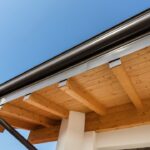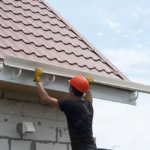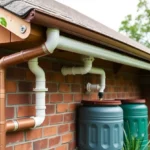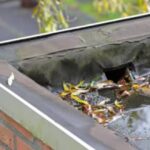When you gaze up to the top of your house, you might notice pipes protruding from your rooftop. Have you ever wondered what these pipes are for? These aren’t just random pieces but vital components that contribute to your homes entire roof system. Here, we’ll dive deep into roof pipes and their essential roles in maintaining your home’s functionality and comfort.

Understanding the Purpose of Roof Pipes
In the vast field of roof design and maintenance, pipes hold tremendous significance. They primarily facilitate plumbing ventilation and ensure your roof and home operate smoothly. Let’s explore further to comprehend what each pipe does.
Types of Roof Pipes
1. Plumbing Vent Pipes
One of the main types visible is plumbing vent pipes. These pipes help expel sewer gases and bring in the fresh air to keep water flowing correctly through your homes drain system. They play a crucial role in preventing blockages and keeping your plumbing system healthy.
2. Roof Drainage Pipes
Roof drainage pipes are another critical structure you might observe. These pipes help divert rainwater off your roof, preventing water accumulation and potential damage caused by standing water. Efficient drainage systems ensure the longevity of your roof and home structure.
Why Are Roof Pipes Crucial?
Considering the big picture, these pipes significantly contribute to your home’s safety and comfort. By ensuring essential functions like ventilation and drainage, they protect your home against potential hazards such as mold growth, sewer gas buildup, and structural water damage.
The Role of Professionals in Roof Maintenance
To keep these systems functioning optimally, regular roof maintenance is crucial. Professionals not only understand these components’ complexities but also offer guidance on keeping your home safe and sound. Ensure you’re consulting experts when dealing with roof-related concerns.
Common Issues with Roof Pipes
Identifying Leaks
Leaks are among the common issues homeowners face concerning roof pipes. Detecting leaks early can prevent more significant complications, including mold growth and water damage.
Blockages in Drainage Systems
Blockages in your drainage systems can hinder effective water flow, leading to unnecessary pressure on your roof structure. Regular inspections can help you detect and prevent these issues.
FAQs
1. How often should roof pipes be inspected?
Regular inspection, at least once a year, or immediately when detecting issues, ensures that your pipes are always in optimal condition.
2. Can I paint the pipes on my roof?
While it is possible to paint roof pipes for aesthetic reasons, it’s crucial to use appropriate materials that do not compromise their function.
3. How do roof pipes contribute to energy efficiency?
By ensuring proper ventilation, roof pipes can significantly contribute to maintaining energy efficiency in your home.
For more details on roof maintenance and choosing the right materials, consider visiting roofing materials. Also, if you are considering a roof replacement, you might find this cost guide helpful.

Wrapping Up: The Tremendous Importance of Roof Pipes
In conclusion, understanding the role of what the pipes on your roof represent is essential for every homeowner. Theyre not just idle components but rather active participants in ensuring your home remains a haven of comfort and safety. Stay informed and proactive about maintaining these vital components, and enjoy the peace of mind knowing your home is both safe and efficient.
This article contains affiliate links. We may earn a commission at no extra cost to you.







